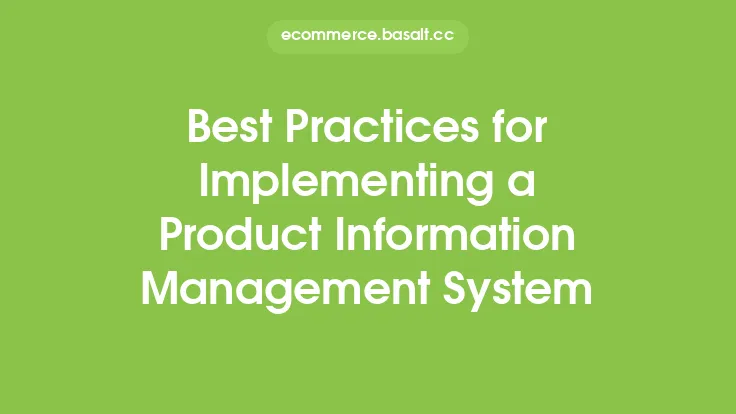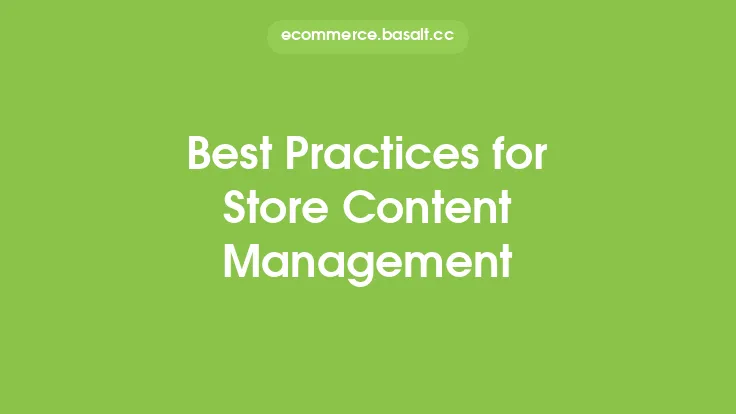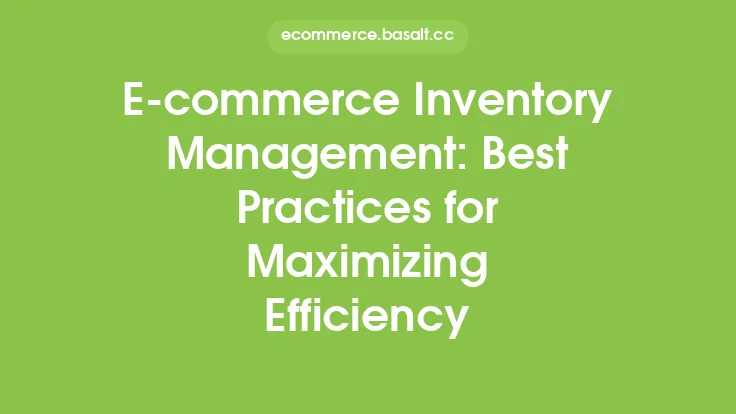Effective product catalog management is crucial for the success of any e-commerce business. It involves organizing, standardizing, and maintaining accurate and up-to-date product information across all sales channels. A well-managed product catalog helps to improve customer experience, increase sales, and reduce operational costs. In this article, we will discuss the best practices for product catalog management that can help e-commerce businesses to achieve these goals.
Introduction to Product Catalog Management
Product catalog management is the process of creating, managing, and maintaining a centralized repository of product information. This includes product descriptions, images, pricing, inventory levels, and other relevant details. The product catalog serves as a single source of truth for all product information, ensuring consistency and accuracy across all sales channels. A well-managed product catalog is essential for providing a seamless customer experience, improving operational efficiency, and driving business growth.
Benefits of Effective Product Catalog Management
Effective product catalog management offers numerous benefits to e-commerce businesses. Some of the key advantages include:
- Improved customer experience: Accurate and up-to-date product information helps to build trust and confidence with customers, leading to increased loyalty and retention.
- Increased sales: A well-managed product catalog helps to improve product visibility, making it easier for customers to find and purchase products.
- Reduced operational costs: Automating product catalog management processes helps to minimize manual errors, reduce labor costs, and improve operational efficiency.
- Enhanced competitiveness: A well-managed product catalog helps e-commerce businesses to stay competitive in the market by providing accurate and up-to-date product information.
Key Components of a Product Catalog
A product catalog typically consists of several key components, including:
- Product descriptions: Detailed descriptions of each product, including features, benefits, and specifications.
- Product images: High-quality images of each product, including different views and angles.
- Pricing and inventory information: Accurate and up-to-date pricing and inventory levels for each product.
- Product variants: Information about different product variants, such as size, color, and material.
- Product categories and subcategories: Organizational structure for grouping similar products together.
Best Practices for Product Catalog Management
To ensure effective product catalog management, e-commerce businesses should follow these best practices:
- Standardize product information: Establish a standardized format for product information to ensure consistency across all sales channels.
- Use high-quality product images: Use high-quality images that showcase products from different angles and views.
- Keep product information up-to-date: Regularly update product information to reflect changes in pricing, inventory levels, and product features.
- Use automated workflows: Automate product catalog management processes to minimize manual errors and improve operational efficiency.
- Monitor and analyze performance: Regularly monitor and analyze product catalog performance to identify areas for improvement.
Product Catalog Management Tools and Technologies
Several tools and technologies are available to support product catalog management, including:
- Product information management (PIM) systems: Centralized platforms for managing product information across all sales channels.
- Enterprise resource planning (ERP) systems: Integrated systems for managing business operations, including product catalog management.
- E-commerce platforms: Online platforms for managing e-commerce operations, including product catalog management.
- Digital asset management (DAM) systems: Centralized platforms for managing digital assets, such as product images and videos.
Challenges and Opportunities in Product Catalog Management
Product catalog management presents several challenges and opportunities for e-commerce businesses. Some of the key challenges include:
- Managing large volumes of product information: E-commerce businesses with large product catalogs face challenges in managing and maintaining accurate and up-to-date product information.
- Ensuring consistency across sales channels: E-commerce businesses must ensure that product information is consistent across all sales channels, including online and offline channels.
- Providing personalized customer experiences: E-commerce businesses must provide personalized customer experiences by offering relevant product recommendations and content.
- Opportunities for innovation: Product catalog management presents opportunities for innovation, such as using artificial intelligence and machine learning to improve product recommendations and customer experiences.
Conclusion
Effective product catalog management is critical for the success of e-commerce businesses. By following best practices, using the right tools and technologies, and addressing challenges and opportunities, e-commerce businesses can improve customer experience, increase sales, and reduce operational costs. As the e-commerce landscape continues to evolve, product catalog management will play an increasingly important role in driving business growth and success.





